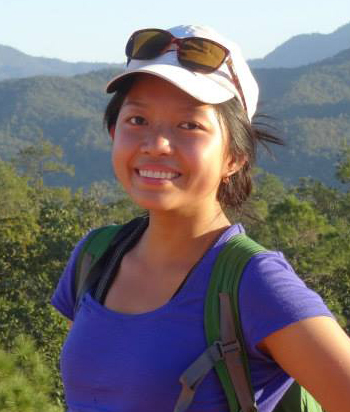Svieda Ma

1st Class Honours
Michael J. Keen Memorial Award - 2010
B.Sc. (Honours) Thesis
(PDF - 97 Mb)
The mafic-ultramafic rocks in the Adula nappe and its westernmost Cima Lunga unit preserve the only record of regional high- to ultrahigh-pressure metamorphism (~13-35 kbar) in the Central Alps. These rocks are contained within felsic country rock gneisses, which are up to 25 kbar lower in peak-pressure conditions. The Adula-Cima Lunga nappe is traditionally interpreted as a tectonic mélange of the European continental basement, metasediments and metavolcanics of Valais ocean- and mantle-derived ultramafic rocks. The exhumation and emplacement of ultrahigh-pressure (UHP) rocks into lower-pressure units remains enigmatic; even more so is the subduction of a large piece of continental crust to mantle depths. This study investigates the kinematics of (U)HP eclogites and the surrounding country rocks in the Cima Lunga unit through structural mapping and a microstructural and textural analysis. Structural mapping allows for a re-interpretation of the lower Cima Lunga nappe boundary. Paired with structural and textural observations, the mafic-ultramafic (U)HP rocks are presented here as a nappe separating lithology rather than lenses within a basement nappe unit.
We examine the lattice preferred orientation in omphacite using electron backscatter diffraction to determine the deformation regime active under (U)HP conditions. Our microstructural observations reveal limited evidence for simple shear; instead, textural data of eclogite rocks show affinity for a flattening strain geometry. When comparing our textural observations with published data from the Cima Lunga and the main Adula nappe, we consistently observe a contrast in omphacite texture between the two areas. Geochronological and thermobarometric data from published studies show similar contrasts: the main Adula nappe has experienced two orogenic cycles of (U)HP subduction and exhumation, while the Cima Lunga has only experienced one cycle during the Alpine orogeny. Structural position, age, and textural discrepancies between the main Adula nappe and the Cima Lunga unit leads us to suggest that these two units have experienced a different geodynamic history and can be considered as two separate lithotectonic units. In summary, I suggest that only the ultramafic rocks of the Cima Lunga domain have endured UHP metamorphism (> 30 kbar), while the Adula nappe was subducted during Alpine orogeny as a coherent body to maximum depths of “only” 24 kbar.
Keywords: Adula nappe, Cima Lunga, eclogite, UHP metamorphism, omphacite LPO, Alpine orogeny
Pages: 80
Supervisor: Djordje Grujic



